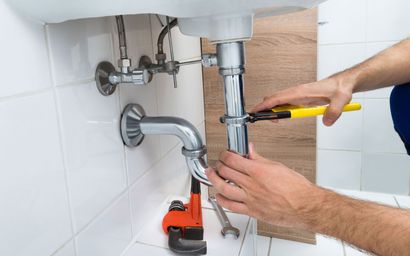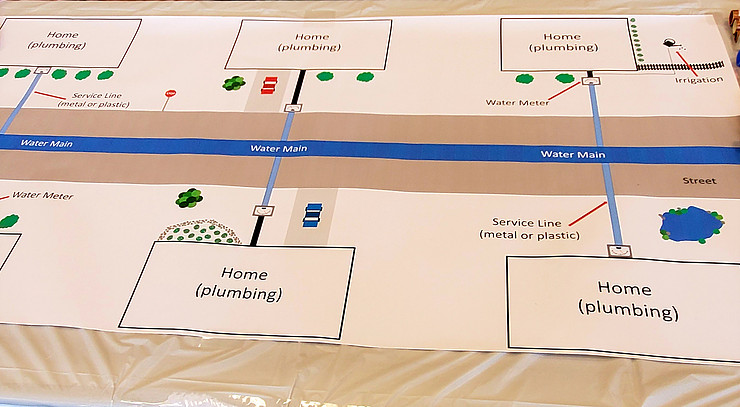A Comprehensive Guide to Your House's Plumbing System Anatomy
A Comprehensive Guide to Your House's Plumbing System Anatomy
Blog Article
Just how do you actually feel in relation to Plumbing Installation 101: All You Need to Know?

Comprehending how your home's plumbing system functions is crucial for every home owner. From delivering clean water for drinking, cooking, and bathing to safely removing wastewater, a well-kept pipes system is vital for your family members's wellness and convenience. In this thorough overview, we'll discover the intricate network that makes up your home's plumbing and offer suggestions on maintenance, upgrades, and dealing with usual problems.
Intro
Your home's pipes system is greater than just a network of pipes; it's a complicated system that ensures you have accessibility to tidy water and reliable wastewater elimination. Recognizing its parts and just how they interact can aid you protect against pricey repair work and ensure everything runs smoothly.
Basic Elements of a Plumbing System
Pipelines and Tubing
At the heart of your plumbing system are the pipes and tubes that bring water throughout your home. These can be constructed from various products such as copper, PVC, or PEX, each with its advantages in terms of durability and cost-effectiveness.
Components: Sinks, Toilets, Showers, and so on.
Components like sinks, commodes, showers, and bathtubs are where water is made use of in your home. Comprehending exactly how these components connect to the plumbing system assists in detecting troubles and intending upgrades.
Shutoffs and Shut-off Points
Valves control the flow of water in your pipes system. Shut-off shutoffs are crucial throughout emergencies or when you need to make repair services, allowing you to isolate parts of the system without interrupting water flow to the whole residence.
Water Supply System
Main Water Line
The primary water line links your home to the local water or an exclusive well. It's where water enters your home and is distributed to various fixtures.
Water Meter and Stress Regulatory Authority
The water meter actions your water use, while a stress regulator guarantees that water flows at a safe stress throughout your home's plumbing system, avoiding damage to pipelines and fixtures.
Cold Water vs. Hot Water Lines
Recognizing the difference between cold water lines, which provide water directly from the major, and warm water lines, which carry warmed water from the hot water heater, assists in fixing and preparing for upgrades.
Drainage System
Drain Pipes Pipes and Traps
Drain pipelines bring wastewater away from sinks, showers, and toilets to the sewage system or sewage-disposal tank. Catches prevent sewage system gases from entering your home and likewise trap particles that can trigger obstructions.
Air flow Pipes
Ventilation pipes permit air right into the water drainage system, protecting against suction that can reduce water drainage and cause catches to vacant. Correct air flow is essential for keeping the integrity of your plumbing system.
Significance of Appropriate Drainage
Ensuring proper drainage prevents backups and water damage. Routinely cleaning drains pipes and preserving traps can prevent pricey repairs and expand the life of your plumbing system.
Water Heating Unit
Types of Hot Water Heater
Water heaters can be tankless or traditional tank-style. Tankless heating units heat water on demand, while tanks save warmed water for instant use.
Upgrading Your Pipes System
Reasons for Upgrading
Upgrading to water-efficient fixtures or replacing old pipelines can boost water high quality, decrease water bills, and increase the worth of your home.
Modern Pipes Technologies and Their Benefits
Explore technologies like clever leakage detectors, water-saving toilets, and energy-efficient hot water heater that can save cash and lower ecological impact.
Price Factors To Consider and ROI
Compute the upfront prices versus long-lasting savings when considering pipes upgrades. Numerous upgrades pay for themselves via minimized energy bills and less repair work.
Just How Water Heaters Connect to the Pipes System
Comprehending how hot water heater connect to both the cold water supply and warm water distribution lines aids in identifying issues like not enough hot water or leakages.
Upkeep Tips for Water Heaters
Routinely purging your hot water heater to remove sediment, examining the temperature level settings, and evaluating for leaks can extend its life expectancy and improve power efficiency.
Usual Plumbing Concerns
Leaks and Their Reasons
Leaks can take place due to maturing pipelines, loose fittings, or high water stress. Attending to leakages without delay prevents water damages and mold development.
Blockages and Blockages
Obstructions in drains pipes and toilets are usually triggered by flushing non-flushable things or an accumulation of grease and hair. Using drainpipe screens and bearing in mind what decreases your drains can protect against blockages.
Indicators of Plumbing Problems to Look For
Low water stress, slow drains pipes, foul odors, or unusually high water costs are indications of prospective plumbing problems that must be addressed without delay.
Pipes Maintenance Tips
Regular Assessments and Checks
Arrange annual plumbing inspections to capture problems early. Look for signs of leakages, rust, or mineral buildup in taps and showerheads.
Do It Yourself Maintenance Tasks
Simple jobs like cleansing faucet aerators, checking for toilet leakages utilizing dye tablet computers, or protecting revealed pipes in cold environments can avoid significant plumbing problems.
When to Call a Professional Plumbing Professional
Know when a pipes issue requires specialist expertise. Trying complicated repairs without correct understanding can result in even more damage and greater repair work prices.
Tips for Minimizing Water Use
Easy routines like dealing with leakages without delay, taking shorter showers, and running full lots of washing and meals can conserve water and lower your utility bills.
Eco-Friendly Pipes Options
Take into consideration lasting plumbing materials like bamboo for flooring, which is durable and environmentally friendly, or recycled glass for countertops.
Emergency situation Preparedness
Steps to Take Throughout a Plumbing Emergency
Know where your shut-off shutoffs lie and how to turn off the water in case of a ruptured pipe or significant leak.
Relevance of Having Emergency Calls Convenient
Keep get in touch with details for local plumbing professionals or emergency situation services conveniently available for fast response during a plumbing situation.
Ecological Impact and Preservation
Water-Saving Fixtures and Home Appliances
Setting up low-flow taps, showerheads, and toilets can substantially minimize water use without sacrificing performance.
Do It Yourself Emergency Fixes (When Appropriate).
Momentary solutions like using duct tape to spot a dripping pipe or putting a pail under a leaking faucet can lessen damage up until a professional plumbing professional shows up.
Verdict.
Comprehending the makeup of your home's plumbing system encourages you to keep it successfully, saving time and money on fixings. By following routine upkeep regimens and staying notified concerning modern pipes modern technologies, you can ensure your plumbing system runs efficiently for many years to find.
HOW YOUR PLUMBING SYSTEM WORKS
Which Pipes Do What?
Blue lines = fresh water supply entering the building Red lines = hot water supply entering the building Grey lines = pipes carrying waste away from the building and venting pipes carrying gases away from the building (through the roof) YOUR MAIN PLUMBING SYSTEMS
There are two main plumbing systems that support your home s basic plumbing needs one that brings clean water into your home, and one that sends dirty water away from your home. Connected to the toilet, bath, shower, and other faucets in your home, these two systems keep your water flowing in the right directions.
ACCESSING FRESH WATER
Fresh and clean water is brought into your home through the main water supply line . Filtered through one pipe, this water is pressured to flow into the various fixtures in your home at any given time.
This water can be sourced from a well located on your property, a pond or river (mostly cottages), or, as in most cases, from the city s municipal water treatment centre. However, it is important to note that water that is untreated, such as the water siphoned from ponds or rivers, may not be safe to drink. Personal water supplies always need to be treated for hardness and contaminants before consumed.
MUNICIPAL WATER SUPPLIES
Improve taste and odour Remove sediment Eliminate hardness Reduce chlorine COLD WATER SUPPLY VS. HOT WATER SUPPLY
Cold water flows into your home or building through the service line, which then distributes hot or cold water to your fixtures. This line is most commonly run through a central column that runs floor to floor. Hot water runs in short and straight pipes as the longer the pipeline, the more heat that will be lost in the transfer. Having shorter pipes also allows residents to access hot water more quickly.
WASTE WATER SYSTEM
Your wastewater system is divided into two parts pipes that send wastewater away from your home and venting pipes that send sewer gas away from your home. Sewage water travels through pipes that flush the water and waste towards local sewers that are operated and managed by your city or town. Most sewer systems rely on gravity to move the wastewater to where it needs to go.
The further away from your toilet or sink, the larger wastewater pipes become. This allows for waste to be disposed of from various parts of your home or business at once without pipe blockages. The angle and flow of these pipes are also essential for keeping your waste pipes clear of build up.
https://harrisplumbing.ca/how-your-home-plumbing-system-works/

As a fervent reader about The Inner Workings of Your Home's Plumbing, I imagined sharing that piece of content was essential. If you please take a moment to share this blog entry if you liked it. Thanks for going through it.
Estimate Free Report this page